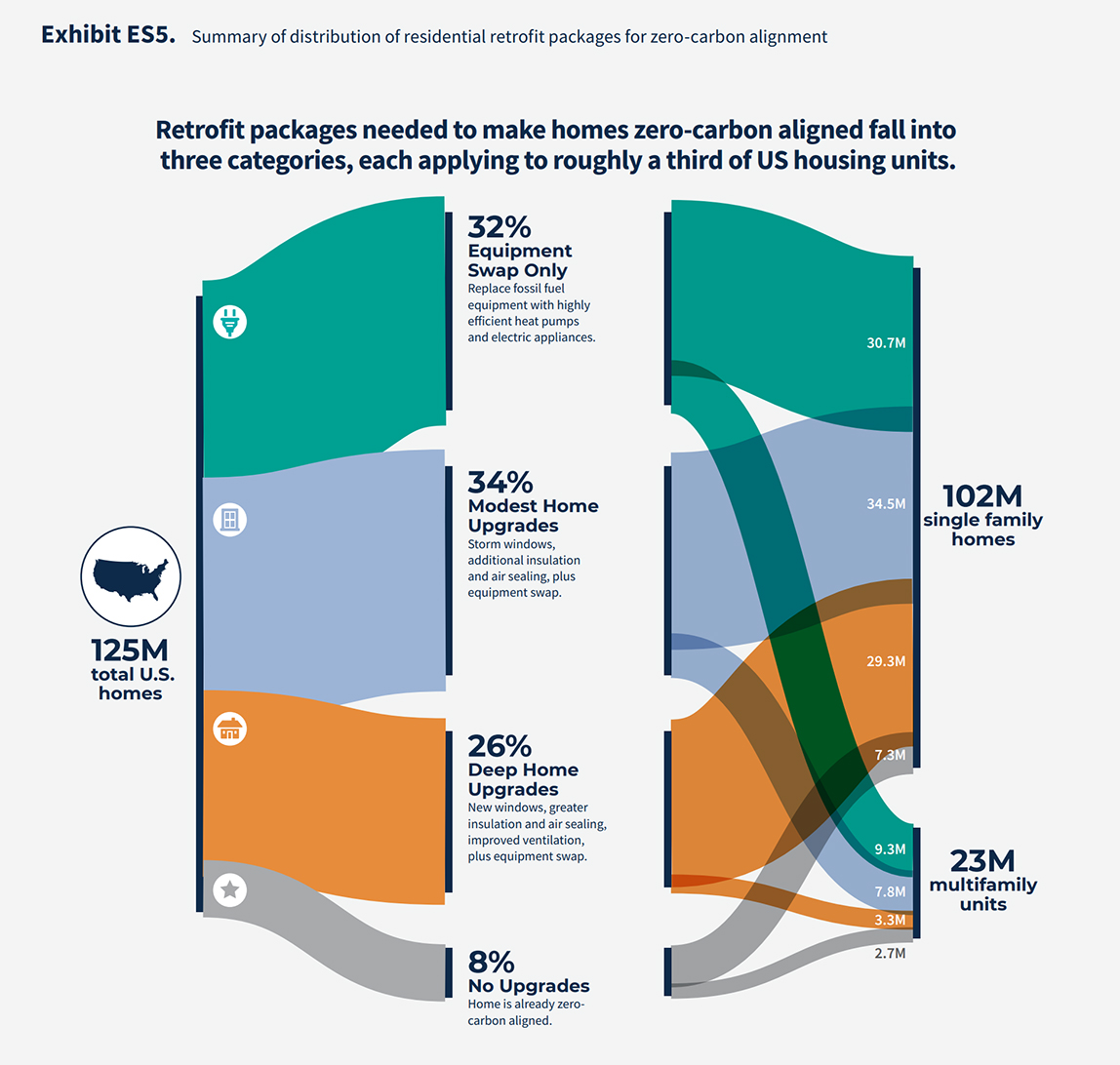Abundant, Affordable, Climate-Friendly Homes: What Part 1 of the National Definition of a Zero Emissions Building Means for Housing
This week, the US Department of Energy (DOE) finalized Part 1 of a national definition of a zero emissions building, focused on operational carbon emissions. The long-anticipated definition includes three key criteria: energy efficiency, no on-site emissions, and all-clean power sources. Buildings following the definition will improve peoples’ health and safety by providing cleaner air to breathe, lower energy costs through efficiency and smart design, and protect the climate by eschewing harmful materials and practices. DOE has indicated that future iterations will aim to address embodied carbon as well.
Announcement celebrated by industry and advocates alike
The announcement has been lauded by high-performance building experts and climate advocates, as it will provide much-needed consistent guidance for real estate leaders, investors, and subnational governments seeking to drive toward a zero-emission building sector by 2050. RMI is encouraged to see that the definition echoes the concept of zero-carbon-aligned buildings from a recent Market Guidance Report from the Advanced Building Construction Collaborative (ABC-C), authored by RMI, VEIC, and three national laboratories (LBNL, NREL, and PNNL).
Advocates also note that the “Part 1” designation of the definition is key. Half of all emissions from new construction between now and 2050 are anticipated to come from embodied, rather than operational, emissions. Only when buildings minimize or negate the climate impact of materials’ manufacture and transportation will they be truly zero emissions.
Zero-emission homes poised to become the norm
The flexibility and simplicity of the definition means that zero operating emissions buildings are economically feasible to build today, especially for new houses and apartments. Two of the three criteria, energy efficiency and zero onsite emissions, can be achieved at or below cost parity with built-to-code, dual-fuel homes today thanks to the low cost of all-electric construction and incentives from the Inflation Reduction Act (IRA). And with 23 states housing over half of the US population already committed to 100 percent clean electricity, today’s homes can either invest in renewable power now or coast toward the goal as the grid grows cleaner.
Meeting the definition could attract investment
The stakes are high, as billions of federal dollars, such as loans from the Greenhouse Gas Reduction Fund (GGRF), condition or prioritize funding on achieving zero operating emissions. Private capital may follow suit as firms seek to catch up on progress toward climate goals, reduce transition risk, or prepare for anticipated climate-related financial disclosure requirements.
Curious how to meet the definition when building or renovating a home? Read on.
How to build a new zero operating emissions home in three easy steps
To meet Part 1 of the national zero emissions building definition, homes must be efficient, all-electric, and clean-energy-powered.
Efficient: A new home must use 10 percent less energy than a similar home built to the latest model code. The three federal efficiency certifications for new homes—ENERGY STAR® for Residential New Construction, ENERGY STAR NextGen, and Zero-Energy Ready Homes (ZERH)—all fulfill this criterion. As we’ve written previously, 45L tax incentives make these certifications a good investment for builders in many states. With smart choices like all-electric construction and use of renewable energy, these new homes could also meet the zero emissions definition.
How close are federal home efficiency certifications to the national zero emissions building definition?
| EFFICIENCY | ON-SITE EMISSIONS | ELECTRICITY EMISSIONS | |
|---|---|---|---|
| Meets national zero emissions building definition | 10% | Yes | Yes |
| ENERGY STAR for Residential New Construction (ESNC) | 10% | No | No |
| ENERGY STAR NextGen (ESNG) | 20% | No, but must include ENERGY STAR heat pumps for space and water heating | No |
| Zero-Energy Ready Home (ZERH) | 40% | No, but must be electric-ready | No, but must be solar-ready |
Have a tip for CleanTechnica? Want to advertise? Want to suggest a guest for our CleanTech Talk podcast? Contact us here.
Latest CleanTechnica.TV Videos

CleanTechnica uses affiliate links. See our policy here.


